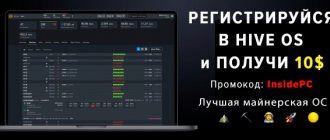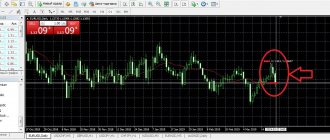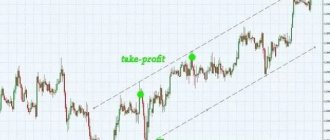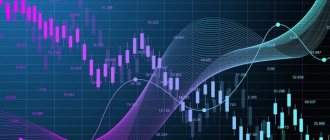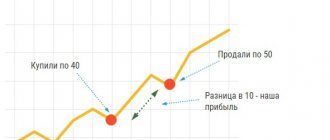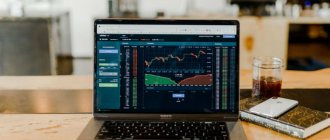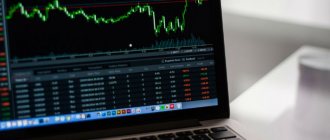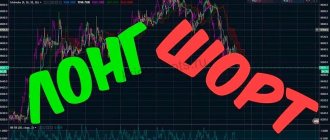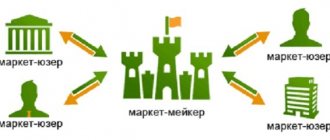Awareness of how to act in conditions of incomplete information -
the main and most urgent task of man.
Nassim Taleb, "Black Swan"
Any business is a risky enterprise based on uncertainty and a special vision of the future. To operate successfully in a world full of uncertainty, companies strive to reduce the associated risks as much as possible - including the risk of sharp changes in future prices for goods or manufactured products necessary for the business. Futures help them with this.
A futures is an exchange contract for the purchase and sale of an underlying asset (share, commodity, etc.) at a predetermined time frame and at a fixed price.
For example, it is important for an airline to know what the cost of fuel will be in six months in order to correctly calculate the cost of air tickets. The oil company also needs to know this in order to plan production and investments. Since it is impossible to accurately predict the price in the future, the companies decide to enter into an agreement - the oil companies will supply fuel in six months, and the airline will buy it - and all this at the price they agreed on in advance. Thus, both companies remove the risks of uncertainty for themselves, and can plan business development based on exact figures for fuel costs and revenues.
This is how futures work, only the companies do not enter into an agreement directly with each other, but on the exchange, which guarantees compliance with all terms of the agreement for each party. The most important terms of a futures contract:
- The underlying asset of the futures . This is what the parties agree on - a product, a share, a currency, and so on. In today's world, you can find futures for anything from timber to cryptocurrencies.
- Duration – how long the contract will be in force. The date the contract ends is called the expiration or performance date.
Why enter into futures contracts when you can simply buy or sell the underlying asset directly? The fact is that futures have several important advantages.
Advantages of futures
| Availability | One reason is that a futures transaction will require much less money than an underlying asset. To work with futures, the exchange charges a refundable fee, its task is to ensure that the obligations of the parties to the futures transaction will be fulfilled. This contribution is called guarantee security (GS). The size of the GO is lower than the cost of purchasing the corresponding quantity of the underlying asset. It turns out that due to the use of GO futures contain built-in leverage, which allows you to use funds efficiently. It also increases the size of possible profits (but also losses). |
| High liquidity | The availability of leverage has made futures very popular, which means there are a lot of buyers and sellers in this market. For many futures, a private investor does not have to worry about the fact that there is no participant in the market on the other side of the transaction. |
| Ease of use | Futures offer flexibility that is difficult to obtain with other instruments. For example, betting on stock prices to fall is much easier with futures than with stocks themselves. Opening a position for a fall in price on the stock market is often technically difficult: shares must be available from the broker for a short position, an additional commission is charged for them, and there are situations when shorting is directly prohibited by the rules of the exchange. With futures, opening a short is as easy as buying. |
| Low commissions | Compared, for example, with the stock market, trading futures is cheaper - this is especially important when there are a lot of transactions, and commissions seriously affect the final financial result. |
All this leads to the fact that futures are becoming more and more popular - both on the world market and on the domestic market. From year to year, both the total trading volume and the number of open contracts are growing - this is called “open interest”.
Source: moex.com
What are futures in simple words
Futures (from the English “futures” - “future”) is a contract for the future delivery of goods between the buyer and seller. Refers to obligations. In slang they are called "futures".
The main idea of a futures contract is to fix the price of a commodity now, and make delivery and payment in the future. The duration of supply contracts usually does not exceed 6 months.
For example, you can buy December futures for oil delivery in July. The oil will be delivered in December at the price paid at the time of purchase. This provides some certainty for both buyers and sellers.
Futures have become widespread on the stock exchange since 1980. Nowadays, they represent one of the best tools for speculation.
Futures belong to the class of derivative financial instruments (derivatives). Their value is directly tied to the price of the underlying asset. Only in cases of force majeure can the price deviate significantly.
What financial instruments can you buy futures for:
- Stock;
- Commodities (oil, gas);
- Currencies;
- Metals;
- Food;
- Stock index;
- Bonds;
- Volatility;
What are they for? The main purpose of futures is to hedge risk on the future price of the underlying asset.
Futures issue
Where do futures contracts appear on the exchange? Nobody issues them, as happens when issuing shares or bonds. They are a contract between buyer and seller. Traders, when making transactions on the stock exchange, create contracts themselves.
The number of open contracts is called "open interest". If this indicator is large, then this means a large number of transactions concluded between traders.
The moment the contract ends is called “ expiration ”. After the contract is closed, trading on it ceases.
Futures trading takes place on the derivatives section (FORTS) of the Moscow Exchange and Forex. But due to the opacity of the Forex market, they are more like “pseudo-assets”, which copies the dynamics in the stock markets, so the main trading takes place only on FORTS.
Note 1 In textbooks you can see another name - “futures contract”. In fact, these are the same thing, so you can say it as it is more convenient.
Note 2 A forward is very similar in definition to a futures, but is a one-time transaction between a seller and a buyer (private agreement). Such a transaction is carried out on the over-the-counter market.
Characteristics of a futures contract
- Contract size is the amount of the underlying asset per contract;
- Full and abbreviated name;
- Contract type: settlement/delivery;
- Terms of contract circulation;
- Minimum price change (step);
The characteristics are indicated on the official website of the Moscow Exchange. For example:
A future with a short maturity is called “near”, and a future with a long maturity is called “long”.
The principle of selecting futures by date. What is the difference?
The specification of each contract specifies the futures expiration date . As soon as the contract is executed, the actual result of the trading operation is calculated, that is, the seller receives money and the buyer receives assets. In futures trading, transactions are closed on a centralized basis through the expiration of absolutely all open positions. Also, for some instruments you can see that several contracts for one asset are traded; naturally, the delivery time is also different.
The execution date is indicated by a letter, and the year by a number . The symbol system is unified, that is, it is used on absolutely all exchanges on which futures are traded. The expiration date varies depending on the underlying asset. For example, execution of index and currency futures occurs at the beginning of the third week of March, June, September or December. As a rule, this is the 20th or 21st.
How do investors select futures by date?
It all depends on the trading strategy used. Conventionally, contracts are divided into long-term , short-term and medium-term . Depending on his own preferences, the trader gives preference to one or another type. Below you can watch a video that very briefly explains how to properly CME futures specification
How is the futures price calculated?
Futures price formula:
F = [Spot Price] × [1 + Interest Rate × Time] + [Storage Cost]
Where:
- F — current futures price;
- Spot price (S) is the current price of the underlying asset (delivery price);
- Interest rate - the current refinancing rate of the Central Bank (key rate);
- Storage costs are the costs of storing goods and insurance. For example, livestock must be fed and kept somewhere;
- Time is the number of months before delivery divided by 12. For example, if there are 6 months left, then the coefficient is 0.5;
The S (spot) and F (futures) prices converge as the expiration date approaches, or at least that's how it should be in theory. In practice, there are abnormal situations when prices can deviate greatly from the norm.
The futures price may be negative. For example, the delivery price of the WTI brand for May 2022 went to minus $40. This is the first time in history that sellers of goods pay extra to buyers.
Futures basis and spread - what is it?
1. Basis (B) - the current difference between the spot and futures prices. Most often a positive value, but it can also be negative. Basis formula:
B = S - F
2. Spread - the difference between two futures prices with different expiration dates.
Spread = F1 – F2
For example, the price for six-month oil contracts is $62, and for three-month contracts is $62.3, the current spot price is $62.55. This means that the spread between a three- and six-month contract is $0.3 (thirty cents).
Forecast
The Nasdaq Index is a reflection of the total capitalization of the TOP 107 largest American companies (yes, exactly 107, not 100).
General characteristics and features of the underlying asset
The Nasdaq index includes only real producers of real goods and services, so it most accurately reflects the true state of affairs in the real sector of the economy.
Analysis and influencing factors
The Nasdaq 100 does not include financial stocks (like the Dow Jones and S&P500, for example). This means that Nasdaq futures are less volatile and more predictable. Of course, economic news, interest rates, and monetary policy reports also have an impact, but it is limited - only bare business indicators play a real role.
Two types of futures - settlement and delivery
There are two types:
- Settlement (on the Moscow Exchange all contracts are settlement);
- Supply;
With the first, everything is simpler, since there will be no real delivery of goods. If they are not sold before execution, the transaction will be closed at the market price on the last day of trading. The difference between the opening and closing prices will be either a profit or a loss for the investor.
The second type is delivery. Even from the name it is clear that upon completion of the contract, actual delivery will take place. For example, it could be stocks or currency.
Most futures on world exchanges are settled.
Calendar Spreads
A calendar spread is a relatively new service provided by the exchange, which allows you to transfer a position from a nearby futures to a distant one.
Example:
You want to transfer a position from SBRF-12.20 to SBRF-3.21. This can be done in two ways:
- Close a position in SBRF-12.20 and open a new one in SBRF-3.21
- Buy the spread between these futures and then your position will automatically roll over.
In the latter case, commission costs are lower because one transaction is made - buying/selling the spread. In the first case, there are two of them - closing a position and opening a new one.
Why are futures needed?
Function 1. Hedging
A logical question may arise: “why are futures needed when you can trade the underlying asset?” The history of their appearance goes back to 1900, when grain was sold.
In winter, farmers set the price for the future harvest in order to insure against strong fluctuations in its value. As a result, regardless of the yield, the seller and buyer had the opportunity to sell/buy products at an average price. This gives a guarantee: one will have something to eat, and the other will have money.
Function 2. Predicting future price
Predicting the future price of an asset. More precisely: what bidders expect it to be today. There are two definitions about expectations:
- Contango is a premium to the spot price. The asset is trading at a lower price than the futures price.
- Backwardation is a discount to the spot price. The asset is trading at a higher price than the futures price.
- Supercontango is a condition in which the forward price of a commodity is significantly higher than the spot price. This cannot be explained by interest and storage costs, which explain the phenomenon of ordinary contango.
Most often in contango markets.
Considerations before trading
Before you start trading futures, let's cover a few important things. First of all, you must decide on the choice of broker, the types of futures you will trade and the type of trading. But first things first.
Choosing a brokerage firm
First of all, you need to decide on the choice of broker. You can choose a full-service broker who will give you a high level of service and advice, but this will likely be quite expensive. Or you can choose a discount broker that provides a minimum of services, but for small commissions. It all depends on your preferences and level of wealth. Probably many readers of this article are private traders and investors for whom a discount broker is the best option.
As always, when choosing a broker, make sure you approach this issue carefully, especially if you have not encountered this “beast” before. Important considerations include commission rates, margin requirements, trade types, software and user interface for monitoring and trading, and quality and speed of customer service.
You can read more about choosing a broker in the article: “Brokers on the stock exchange. Recommendations for choosing and minimizing your risks when working with them."
Futures Market Categories
If you trade stocks, you know that there are many different industries (e.g. technology, oil, banking). While the mechanics of trading for each industry remain the same, the nuances of the underlying industries and businesses vary widely. It's the same with futures. All futures contracts are similar, but futures contracts track such a wide range of instruments that it is important to be aware of the existing categories. For a better understanding, it is helpful to compare futures categories to industries in the stock market and each stock futures contract. The main categories of futures contracts, as well as some common contracts that fall into these categories, are listed below.
1. Agriculture:
- Cereals (corn, oil, soybeans)
- Livestock (cattle, pigs)
- Dairy (milk, cheese)
- Forest (wood, cellulose)
2. Energy:
- Raw oil
- Heating oil
- Natural gas
- Coal
3. Stock indices:
- S&P 500
- Nasdaq 100
- Nikkei 225
- E-mini S&P 500
4. FOREX:
- Euro/$
- GBP/$
- Yen/$
- Euro/Yen
5. Interest rates:
- Treasuries (2, 5, 10, 30 year)
- Money markets (eurodollar, fed funds)
- Interest Rate Swaps
- Barclays Aggregate Index
6. Metals:
- Gold
- Silver
- Platinum
- Non-ferrous metals (copper, steel)
You can trade in any of these categories. To start, you may want to consider something that is already familiar to you. So, for example, if you have been trading stocks for many years, you can start your futures trading with stock indexes. In this case, you already know the main forces driving the stock market, and all you have to do is learn the nuances of the futures market itself. Likewise, if you worked for Exxon for thirty years, you might want to initially focus on energy, since you probably understand what drives the direction of the oil market.
Once you have chosen your futures market category, the next step is to determine which instruments you will trade. Let's assume that you decide to trade instruments in the energy category. Now you must decide which contracts to focus your attention on. Does your interest lie in crude oil, natural gas or coal? If you decide to focus on crude oil, you can choose from West Texas Intermediate, Brent Sea, or a variety of other options. Each of these markets will have its own nuances: different levels of liquidity, volatility, different contract sizes and margin requirements. It is imperative that you decide on these points before starting a career in the futures market.
Types of transactions in the futures market
At the simplest level, you can buy or sell a futures contract with the expectation that its price will rise or fall. These types of trades are familiar to most stock market investors and are easy to understand. Thus, direct buying and selling is probably a good idea to get started with futures trading. Once you have made some progress in futures trading, you will probably want to use some of the more advanced futures trading techniques. Since this is a beginner's guide, we will not consider these methods in detail, limiting ourselves to only a brief description of them. You can get acquainted with them in more detail in the relevant sections of this site. Types of trades that professional futures traders typically use:
- A trader opens a long (short) position in the futures market and at the same time a short (long) position in the money market. This is a bet that the difference between the futures price of a commodity and the commodity itself will fluctuate. For example, a trader can buy 10-year US Treasury bond futures and at the same time sell the 10-year US Treasury bond itself. Thus, he will have two open positions, one to buy (long), the other to sell (short). Prices for both positions, for obvious reasons, will move almost synchronously, but fluctuations between them are also inevitable. With these fluctuations, the total profit “on paper” will be either positive or negative. The trader, of course, is interested in those fluctuations in which the total profit is positive, and he closes both positions on them, taking the jackpot;
- A trader opens long and short positions on two different futures contracts. This is a bet that the price difference between them will change. For example, a trader might buy an S&P 500 contract for March delivery and sell an S&P 500 contract for June delivery. Or buy a contract for West Texas Intermediate (WTI) oil and sell a contract for Brent Sea oil. The logic of making a profit here is the same as in the previous paragraph;
- Futures are often used for hedging. For example, if you have a large holding of stocks that you don't want to sell for tax reasons, but you're afraid of a sharp market decline, then you could sell S&P 500 futures as a hedge against a decline in the stock market.
Futures trading - how and where to buy
Futures are one of the most liquid financial instruments on the exchange. For a trader, this is an ordinary exchange instrument that can be bought and sold at any time. The main difference is the limited validity period. But no one obliges you to wait until the deadline for its execution.
Most traders just want to make money and not make a purchase with real delivery.
Large companies are interested in reducing their risks (hedge), especially in commodity supplies, so they are one of the main players in this market.
When purchasing futures on the Moscow Exchange, you must deposit your own funds for 1/7 of the purchase price. This part is called the “margin” (GS) or “variation margin”. Abroad, this part is called “margin” (in English “margin” - leverage) and can be a much smaller value (on average 1/100 - 1/500).
The variation margin is recalculated daily twice a day (from 14:00 to 14:05 and from 18:45 to 19:00). For example, if assets increased by 1,500 rubles, then at the next clearing the money will be transferred to a brokerage account. The same goes for losses. If the price has fallen, then it is necessary to increase the guarantee by the corresponding amount.
- How to trade futures;
- Margin trading - detailed description;
The commission for futures trading is significantly lower than for the securities section (stocks, bonds), ETFs and currencies. Therefore, there are many scalpers in this market.
Futures for stock indices, currencies and commodities are of greatest interest to speculators. On the Moscow Exchange, the most liquid futures are contracts for the RTS index (RTSI) and the SI dollar.
Where and how to buy futures for individuals
You can buy futures from any Forex broker or on the derivatives market of the Moscow Exchange. At the same time, free “leverage” is provided, which allows you to trade for decent money even with a small starting capital. But it is worth remembering the risks of using your shoulder.
The best brokerage companies for the stock exchange (FOTS section):
- Finam (promotion: Free Trade tariff, trading without commission forever)
- BCS Broker
Open a brokerage account now »
Best Forex Brokers:
- ROBOFOREX
- AMARKETS
- How to choose a broker for the stock exchange;
- How to choose a Forex broker;
- Which broker to choose for trading on the stock exchange;
Summary
Futures are not as risky an instrument as many investors believe them to be. If you do not engage in margin trading and monitor the level of collateral, then it can allow you to more competently manage liquidity in your portfolio and earn additional money from this (as in example 2).
The most important thing that non-speculators need to take away from this article is that you do not need to buy futures for an amount exceeding the funds in your portfolio. If you have 100,000 rubles in your account, through futures you can afford to buy Sberbank shares worth 500,000 rubles, since the leverage is 5. But if the price falls by 20%, you lose your entire deposit and the broker forcibly closes your position.
Price hedging through futures
For example, you own a large block of shares in a company. The stock market is expected to decline. The natural desire of an investor would be to get rid of them. But selling such a large volume in a short period of time is problematic, as this can cause a price collapse. Therefore, you can open a bearish (short) position through the futures market.
A similar scheme is used in periods of uncertainty and the emergence of financial risks. They may be related to the upcoming elections in the country, referendums, and negotiations.
Instead of selling all assets, investors can open opposite positions, thereby protecting their investment portfolio from losses. If the futures falls, the investor will make money on the fall, but will lose on the stock. The same is true if the stock grows: it will make money on the growth, but will lose on the derivative instrument. The investor seems to support the “status quo”.
Holding stocks and shorting futures can also help with taxes. If you hold shares for more than three years, the investor is exempt from income tax on them.
Introduction
Futures can be used both to effectively hedge other investment positions and for speculation. This carries the potential for good profits associated with the use of leverage (we will discuss this issue in more detail later). However, let's not forget that using leverage is always associated with increased risk. Before you start trading futures, you must not only prepare as theoretically as possible, but also be absolutely sure that you are able and willing to accept financial losses.
The basic structure of this guide is as follows:
We'll start with a general overview of the futures market, including what futures are and how they differ from other financial instruments. Let's discuss the advantages and disadvantages of using leverage.
The second section provides some considerations before you begin trading, such as how to choose the right brokerage firm for futures trading, the different types of futures contracts, and the different types of trades.
The third section covers futures valuation, including fundamental and technical analysis techniques, as well as software packages that may be useful to you in futures trading.
Finally, in the fourth section of this guide, an example of real futures trading is provided. Step by step we will look at choosing an instrument, analyzing the market and executing a trade.
By the end of this guide, you should have a basic understanding of futures trading, which will allow you to decide whether this type of trading is worth pursuing. And it will provide a good foundation for further study of the futures market if you decide that such trading is right for you.
Futures or stocks - which is better to trade?
What is better for a trader to choose for trading: futures or stocks? These tools have their own characteristics.
1 Difference in dividends. For example, by purchasing a share you can receive dividends annually. As a rule, these are small amounts around 3-10% per annum, but nevertheless, there is no such thing as extra money.
Plus, you can hold shares for as long as you like, taking on the role of a long-term investor. Futures have a lifespan and do not pay dividends.
2 When purchasing shares, you must pay 100% of the purchase amount. Futures are always purchased with borrowed funds to maintain the margin.
3 Futures have a maturity date, unlike stocks. In general, they are classified exclusively as speculative instruments. There is no point in keeping them long term. They discipline traders because they have to think about trading over a shorter period of time. If the goal is to make money on fluctuations, then they are better suited for such purposes.
4 Commissions for futures transactions are about 30 times lower than for stocks. Leverages are issued free of charge, unlike the stock market, where leverage costs 12-20% per annum. For lovers of scalping and intraday trading, they are perfect.
5 In the stock market, there is sometimes no opportunity to short certain companies (short positions on them may be prohibited). Futures do not have this problem. You can buy long and short all available assets.
Advantages and disadvantages
Like any market instrument, futures are not without pros and cons.
Advantages:
- Large selection of tools.
- Increased profits thanks to built-in leverage.
- Wide range of strategies due to high liquidity and volatility.
- A small amount of funds for entry.
- Tools that are available on many exchanges around the world.
Flaws:
- Short life, most futures are only traded during the last 3 months before expiration.
- Margin trading (risk of significant loss of funds in the absence of trading experience).
Futures on the Russian market
The Moscow Exchange has three main sections with futures.
- Stock:
- Shares (only the most liquid);
- Indices (RTS, MICEX, BRICS countries);
- Volatility of the MICEX stock market;
- Monetary:
- Currency pairs (ruble, dollar, euro, pound sterling, Japanese yen, etc.);
- Interest rates;
- OFZ basket;
- Basket of Eurobonds RF-30;
- Commodity:
- Raw sugar;
- Precious metals (gold, silver, platinum, palladium);
- Oil;
- Average price of electricity;
Useful tips for novice investors
- For novice investors, it is best to start with the Russian derivatives market, using highly liquid trading instruments : the RTS index, Gazprom shares, currency pairs EUR/USD , RUB/USD . Trading futures contracts on these assets is characterized by excellent returns.
- To build a trading system , you must first undergo appropriate training. Investors mainly use mechanical strategies based on the work of indicators. You can also use candlestick analysis tools. To do this, I recommend reading the article “Japanese candles for beginners.”
- Before you start trading with real money, thoroughly hone your skills on a practice trading account . It is also advisable to select two markets at once in which the effectiveness of strategies could be tested.
- Develop your own risk management system to constantly monitor the size of your trading account and reduce the likelihood of a complete loss of your deposit.
- Enter into a user agreement with one of the previously proposed brokers - Zerich or Just2Trade.
Video series for beginners and more
Watch the training webinar conducted by the director of the Zerich . After viewing it, you will learn how to trade futures through the QUIK .
Webinar organized by Finam . It describes in detail the principles of making money from oil and gold.
Useful video about warranty coverage .
An animated cartoon that calculates the cost of purchasing BRENT .
Another video explaining the principle of making money on oil using futures.
Explanation of futures - what the ticker consists of
Futures contract tickers have the format:
[TICK]—[MM].[YY]
Where:
- TICK — ticker of the underlying asset;
- MM—execution month;
- YY—year of execution;
For example, SBER-12.21 is a futures contract on Sberbank shares with execution in December 2022.
There is also an abbreviated name for the futures:
[CC][M][Y]
Where:
- СС - short code of the underlying asset of two characters;
- M - letter designation of the month of execution;
- Y is the last digit of the year of execution;
For example, SBER-11.20 in its abbreviated name looks like this - SRN1.
The following letter designations for months are accepted on the Moscow Exchange:
- F - January;
- G - February;
- H - March;
- J - April;
- K - May;
- M - June;
- N - July;
- Q - August;
- U - September;
- V - October;
- X - November;
- Z - December;
Tips from professional traders
Effective futures trading depends on the level of preparation for the process. You need to learn not only the basics of stock trading, but also take into account all possible risks and insure yourself using available tools.
Before trading on the real market, you should practice on a demo account. It is not recommended to stay long on the training option. Psychologically, it will be difficult to open positions with real money due to the comfortable habituation.
It is better to start trading with small volumes and work out an acceptable strategy for subsequently increasing your trading deposit.
Where can I see a list of all current futures?
You can view lists and observe graphs of futures contract quotes in the trading terminal on the exchange website. You can use additional sources of information. Many sites provide lists of domestic and global futures.
A visual quote board for most Western instruments is the resource finviz.com/futures.ashx.
Futures quotes on most resources are displayed with a slight delay (up to 15 minutes).
Futures quotes provided by TradingView
A good resource with a large list of major futures and quote charts is tradoman.ru/fyuchersy-onlajn. There are symbols for all popular instruments, here is a summary table:
Where to download quote history
You can download quotes and view trading history on the Finam broker website at: https://www.finam.ru/profile/mosbirzha-fyuchersy/si/export.
How to choose the right futures date
Futures relevant for trading are no older than 3 months before expiration. The contract closing date is indicated in the specification. Typically, the third Friday of the month is the expiration date.
What happens on the last day of trading
Volatility usually drops before the contract closes. Therefore, you should update the instrument the day before expiration. It is especially important to change the contract more often when trading intraday.
If you do not have time to close the deal, the outcome depends on the type of futures. When a delivery futures contract (for example, on Sberbank shares) expires, you will be credited or debited with the underlying asset—Sberbank shares. With settlement futures it is simpler: they will simply close your deal at the current price.
Do investors need futures?
No. Futures, as you remember, have a lifespan. An investor, unlike a trader, buys assets for long-term ownership and tries to make a profit for as long as possible.
Shares do not have a lifespan, give the right to own a piece of the company and can bring dividends. They can be inherited, donated, or even pledged as property.
Preliminary market analysis
In order to select a futures contract for speculative trading or before concluding a particular transaction with the selected futures, it is necessary to conduct at least a cursory analysis of the current market situation. Currently, the most popular methods for studying the current and forecasting the future market situation are fundamental and technical market analysis.
Fundamental analysis of futures
This type of analysis is aimed at examining a variety of micro- and macroeconomic indicators that could potentially affect the future prices of futures contracts. Since the futures price has a strong correlation with the price of its underlying asset, all those factors that in one way or another can influence the balance of supply and demand in relation to the underlying asset are examined.
For example, if we are talking about currency futures, then the main factors that can influence them are such important indicators of the FOREX market as interest rate levels, inflation and deflation indicators in countries whose national currencies make up the currency pair under study. Various types of macroeconomic news published both on a regular basis (in the so-called economic calendar) and spontaneous news have a great influence.
If we talk about the stock market - futures for stocks and bonds, then the dominant role in conducting fundamental analysis is played by all the numerous microeconomic factors associated with the work and financial condition of the issuing company (mostly we are talking about data from regular financial statements). In addition, in this case, great influence is given to the analysis of fundamental ratios, such as: P/CF, EPS, P/B, P/S, PEG, P/E (read more about them in the section fundamental analysis ratios) .
Typically, fundamental analysis of the stock market is carried out from top to bottom: first, macroeconomic factors that influence the state of the economy as a whole are considered, then the situation in the industry to which the issuer of the underlying futures asset belongs is analyzed, and finally the condition of the company itself (the issuer of the underlying asset) is assessed.
You can get acquainted with the basics of fundamental analysis by clicking on the link: “Fundamental market analysis and methods for conducting it.”
Technical analysis of futures
This type of analysis is carried out exclusively using price charts. A technical analyst is not particularly interested in how the underlying fundamental indicators change, since in his work he is guided by the basic postulate of technical analysis:
The price on the chart already includes and reflects absolutely all those factors that can influence it in one way or another.
Another basic postulate of technical analysis is the statement that price tends to move in so-called trends. That is, in other words, at any current moment in time the price is in one trend or another (upward or downward) trend. And even if you see a clear absence of a trend on the chart (the price is in a flat), this only means that only a small section of the entire price chart is open to you and in fact the current flat is nothing more than a consolidation zone before the next reversal of the trend present on chart with a large time frame.
Trends visible on charts of small time frames are nothing more than components of trends on charts of large time frames. So a downward trend on a chart with a period of M5 (five minutes) may be just part of an uptrend on a chart with a period of H1 (hour), take a look at the figure below:
Patterns and support/resistance levels play a big role in technical market analysis. A pattern is a certain formation formed on the price chart, after the appearance of which there is a high probability of price movement in a certain direction. And support and resistance levels are price levels that the price is unable to overcome for quite a long time (the longer, the stronger the corresponding level). The support level is located below the price, and the resistance level is located above it. Read more about the analysis of levels and the basics of trading on them in the material: “Support levels and resistance levels.”
In addition, technical market analysis has a whole range of tools called indicators.
In general, a technical indicator is the quintessence or distillation of the entire price chart for a certain period of time.
Thanks to the use of modern computing power, it is possible, as they say, to examine the price chart from different angles and in different aspects. Indicators are built based on price chart data and are designed to simplify the process of analyzing the entire huge array of data of its components.
The result of the indicator is usually a buy signal (indicating that the price will rise) or a sell signal (indicating an impending price decrease). These kinds of signals coming from individual indicators are very unreliable, and therefore their use makes sense only in conjunction with other technical analysis tools (with other indicators, support/resistance lines, patterns).
You can read more about indicators here: “Technical analysis indicators”
